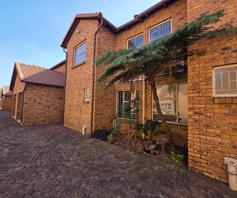Construction of the five-star Taj Cape Town hotel, which marries two converted heritage buildings in central Cape Town with a new tower wing that rises behind their rooflines, is 95% complete.

The hotel is scheduled to open its doors in mid-December, according to general manager Michael Pownall.
Situated on Wale Street, directly opposite St George's Cathedral, the hotel, which incorporates the former Board of Executors (BOE) and Reserve Bank buildings, has been developed in joint venture partnership by South African property development company Eurocape and Tata Africa, at an estimated cost of about R500m. Tata is the parent company of the Taj Hotel group, Asia's largest hotel chain, which has more than 85 hotels around the world, many of them conversions of historical buildings, including palaces.
The restoration and upgrading of the two landmark buildings within the Taj Cape Town, the group's first hotel in South Africa, has been sensitively handled. The external façades, for example, have been carefully refurbished, keeping modern interventions to a minimum, to ensure that renovated features such as the Paarl granite and wrought iron work on the old Reserve Bank building look as striking as they did when the building was first erected.

Pownall points out that doing a conversion of this kind is far more complex than constructing a new building. "One of the design challenges was to get the marriage of the historical buildings and the modern tower wing correct, so they would not jar, which dhk, the architects, have done brilliantly," he says. "Another was that the changes to the interiors had to be kept to a minimum to preserve as many as possible of the existing original features, such as the wood panelling, high ceilings and marble columns, while converting the layouts of the former banks into an operational luxury hotel space."

The conversion also presented the construction company Murray and Roberts with out-of-the-ordinary challenges, as the building work had to be done "sensitively but economically". Pownall says that in laying services and changing layouts, it was discovered that the 100-year-old plans did not always correspond to the reality. Also, in carrying out the construction, including demolition, immoveable heritage items had to be carefully protected. For example, the four magnificent cream-and-brown marble pillars that stood at the entrance of the Reserve Bank building – now the hotel's foyer – had to be swathed in protective casings and will remain so until all the building work is completed.
Pownall, who took up his position last October and was not involved at the early planning stage, says his understanding is that it took three to five years to get all the relevant approvals and planning permission for the conversion of the historical buildings before construction began about 18 months ago.
The 17-floor hotel comprises 166 guest rooms and suites; 10 sectional title suites; seven heritage meeting rooms that have been created out of the classical, wood-panelled former bank boardrooms; three restaurants; and a spa with eight treatment rooms, a hammam (a Turkish-style steam bath with drier heat), saunas and steam showers, and "all the bells and whistles you'd expect in a modern luxury spa."
The guest rooms are grouped into two main categories: heritage rooms and suites, which are situated in the two historic buildings and have an old-world quality; and tower rooms and suites, which, in contrast, are modern in design with floor-to-ceiling glass facades and private balconies providing views of the city and Table Mountain.
The sectional title luxury suites comprise one- or two-bedroomed self-contained units, ranging in size from about 82m² to more than 229m², complete with their own kitchenettes. The suites will be marketed to individual buyers and will not go into a rental pool, Pownall says. He speculates that these lock-up-and-go units will appeal to foreign buyers who have business interests in Cape Town or who visit the city for fairly long periods at a time, and would prefer to have an apartment in a fully-serviced hotel, rather than worry about the upkeep of a normal apartment. Other potential purchasers may be South Africans who wish to "live in" permanently at the hotel, he says.
Taj Cape Town's three restaurants will have different offerings. The Twankey is a seafood, champagne and oyster bar with elegant décor and large "wrap-around" windows that will enable guests to watch the passing parade in the city with close-up views of Parliament and the Cathedral. Mint Restaurant will provide an all-day dining option, with tables both inside and outside on the St George's Mall pedestrian precinct. The Bombay Brasserie will treat guests to Indian speciality dining. Pownall says that while the hotel will not specifically target visitors from India and Asia, it is expected that many travellers from those areas will choose to stay at the hotel because they are very familiar with the Taj brand.
He believes an aspect of the hotel that will become increasingly attractive to tourists over time is that it is surrounded by most of the historical places of interest in Cape Town. "Until now, visitors' interest has focused predominantly on South Africa's recent political history," he says. "Now they are becoming more interested in Cape Town's earlier history. Many do not realise it is a very old city that was once part of the spice route between the East and Europe, and that it has a castle and the Company Gardens, among other interesting sites."
As overseas visitors have a thirst, when they first visit a country, to find out how it was founded, and to visit the cultural and historical sites to get a flavour of its past, Pownall believes that the central part of the city – which has seen much regeneration in recent years and is now a clean, secure area that is easy to walk around in - will become a viable alternative destination to the modern amenities of the V&A Waterfront. – Impti du Toit
Readers' Comments
Have a comment about this article? Email us now.







